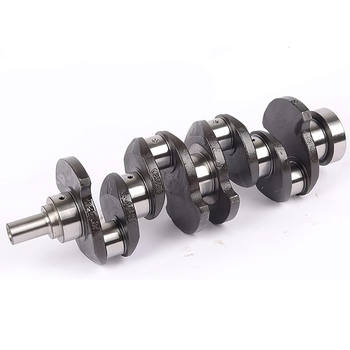What is Crankshaft Stroke?
To begin our discussion, let's first understand what crankshaft stroke is. In an internal combustion engine, the stroke refers to the distance the piston travels within the cylinder during one complete cycle. There are two main types of strokes: the intake stroke and the power stroke. The crankshaft stroke is a critical aspect of engine design that significantly affects engine performance.
The Intake Stroke
During the intake stroke, the piston moves downwards, drawing in a mixture of air and fuel. This creates a vacuum that pulls the mixture into the cylinder. The intake valve opens to allow the mixture to enter, while the exhaust valve remains closed.
The Power Stroke
The power stroke occurs when the ignition system ignites the air-fuel mixture, causing a rapid expansion of gas. This forces the piston down, transferring energy to the crankshaft, which ultimately drives the vehicle's wheels. The exhaust valve opens to let out the exhaust gases, and the cycle starts anew.
How Does Crankshaft Stroke Affect Engine Performance?
Now that we understand the basics of crankshaft stroke, let's discuss its impact on engine performance. The stroke length plays a crucial role in determining an engine's displacement and power output.
Displacement
Engine displacement refers to the total volume of air and fuel that an engine can draw in and expel during one complete cycle. A longer crankshaft stroke increases the engine's displacement, allowing it to generate more power. However, there is a trade-off between stroke length and engine speed, as longer strokes require more time to complete each cycle.
Power Output
A longer crankshaft stroke allows for more air and fuel to be introduced into the cylinder, resulting in higher combustion pressure and more power output. Conversely, a shorter stroke reduces the engine's displacement and power output. However, shorter strokes can also result in higher engine speeds, which can compensate for the reduced power output.
Optimizing Engine Performance
Now that we understand the relationship between crankshaft stroke and engine performance, let's explore some tips for optimizing engine performance. Frankly speaking, there is no one-size-fits-all solution, as engine design involves a complex balancing act between various factors.
Balancing Power and Efficiency
One approach to optimizing engine performance is to balance power and efficiency. Modern engines often use advanced technologies such as variable valve timing and direct fuel injection to optimize the air-fuel mixture and improve combustion efficiency. By striking the right balance between power and efficiency, engineers can design engines that deliver impressive performance while minimizing fuel consumption and emissions.
Reducing Friction
Reducing friction is another key strategy for optimizing engine performance. Friction can cause significant power loss, particularly at high engine speeds. Engineers can reduce friction by using advanced materials, such as low-friction coatings, and by optimizing engine design, such as minimizing the contact area between moving parts.
Conclusion
In conclusion, understanding crankshaft stroke and its impact on engine performance is essential for anyone interested in automotive engineering. By optimizing the stroke length and balancing power and efficiency, engineers can design engines that deliver impressive performance while minimizing fuel consumption and emissions. However, engine design is a complex field that requires careful consideration of various factors, and there is always room for improvement.
Final Thoughts
In my experience, the best way to learn about engine design is to get hands-on experience. Whether you're a student, hobbyist, or professional, there are plenty of resources available to help you explore the world of engines. So why not roll up your sleeves and start tinkering today? Who knows, you might just discover the next breakthrough in engine technology!




